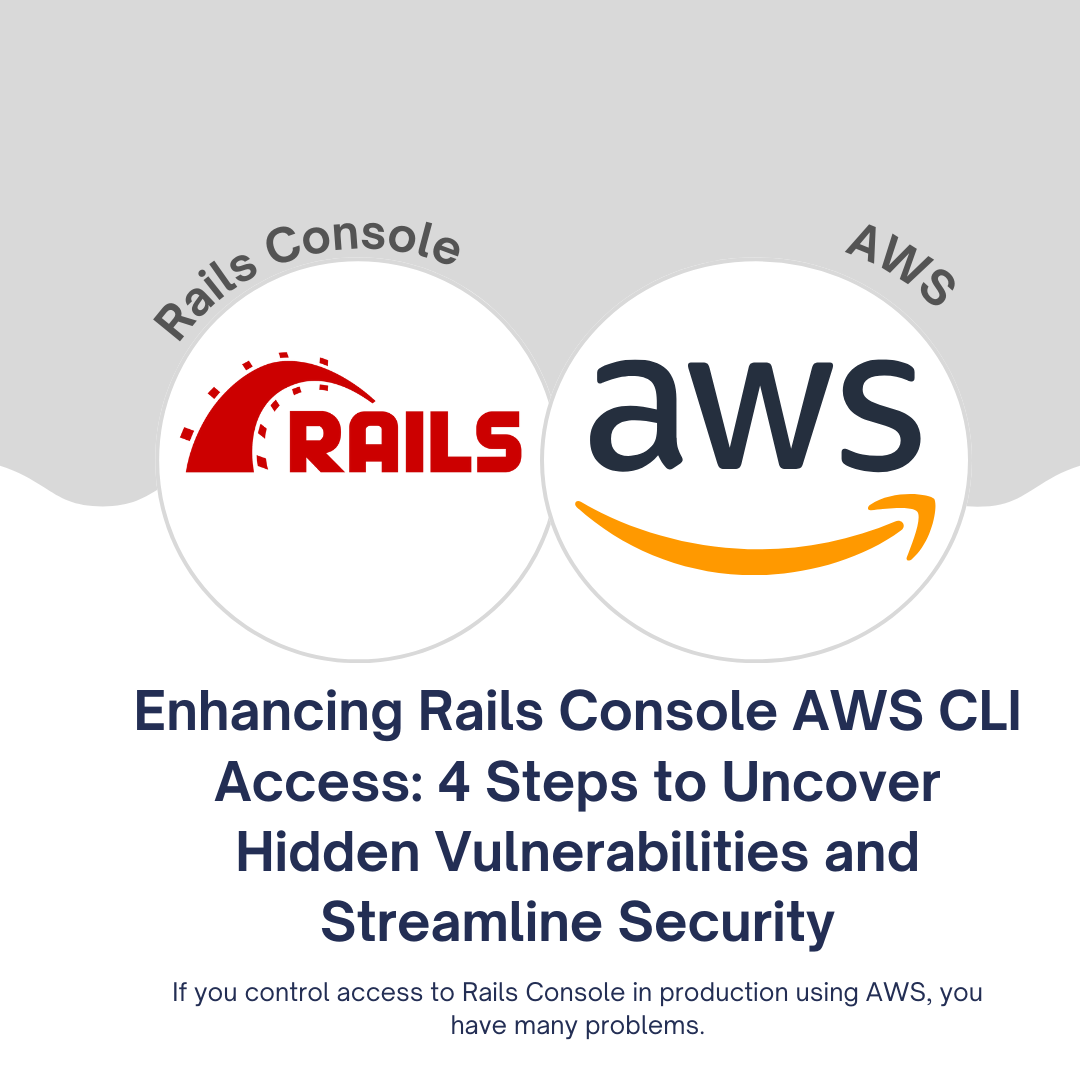Enhancing Rails Console AWS CLI Access: 4 Steps to Uncover Hidden Vulnerabilities and Streamline Security

Access to Rails Console in a production environment is vital for ensuring the smooth operation of web applications and resolving issues promptly. Many teams rely on AWS CLI for managing this access, but it comes with its own set of challenges and vulnerabilities. In this article, we'll delve into the five major problems associated with AWS CLI access to Rails Console, discuss their impacts, and explore practical solutions to mitigate these issues.
The Importance of Fast Access in Production
Fast access to the right engineers in a production environment is crucial for maintaining product speed and addressing various operational needs such as troubleshooting, bug fixes, and incident resolutions. However, the method used to grant access can significantly impact security and workflow efficiency.
Identifying the Five Biggest Problems
Let's dissect the five major problems associated with AWS CLI access to Rails Console:
1. Building Infrastructure Pain
Setting up the infrastructure to manage Rails Console access via AWS CLI can be a cumbersome and time-consuming task. It requires careful configuration and management, often leading to potential misconfigurations or security lapses.
2. Hidden Vulnerabilities
Certain crucial components are often overlooked when granting access to Rails Console, creating hidden vulnerabilities that can be exploited. These vulnerabilities include:
- Single Sign-on & MFA: Lack of Single Sign-on (SSO) and Multi-Factor Authentication (MFA) can expose systems to unauthorized access.
- Audit Trials and PII Protection: Inadequate auditing capabilities and insufficient protection of Personally Identifiable Information (PII) can lead to compliance issues and data breaches.
- Compliance (GDPR, PCI, SOC2, and HIPAA): Failure to comply with industry regulations can result in legal repercussions and damage to reputation.
- Developer Experience: Neglecting developer experience can hinder productivity and lead to inefficiencies in accessing Rails Console.
Addressing the Problems
Now that we've identified the key issues, let's explore four steps to fix these hidden vulnerabilities and enhance the Rails Console AWS CLI access experience:
1. Gradual Implementation of Features
Adopt the 80/20 rule when implementing access management features:
a. Add Rails Console to Existing Systems
Integrate Rails Console with systems you already manage. For instance, if you are already using Google Workspaces, you don't necessarily need to set up a separate LDAP directory.
b. Streamline Single Sign-on (SSO)
Implementing SSO for SSH access can be challenging, but it's essential. Look for tools that simplify this process, such as Cloud Shell solutions from AWS or Google Cloud. Alternatively, consider tools like Runops. Prioritize integrating SSO with Google OAuth before embarking on complex LDAP projects.
2. Prioritize Features Based on Industry
Consider your industry and prioritize Rails Console access features accordingly:
a. Developer Experience
If your industry isn't heavily regulated and doesn't handle sensitive data, focus on improving developer experience, SSO, and MFA. Reduce the number of steps required for developers to access Rails Console.
b. Compliance-Driven Security
In highly regulated industries like fintech, compliance requirements take precedence. While the access process may involve more steps, prioritize implementing audit features and robust security measures to ensure compliance with industry standards.
3. Leverage Comprehensive Access Management Solutions
Reduce complexity by managing multiple access points within a single tool:
Consider consolidating access management for Rails Console, AWS/GCP, other databases, Kubernetes, and servers into a unified tool. While individual tools may excel at specific use cases, managing multiple tools can become unwieldy. Solutions like Runops offer a single platform to address various access needs efficiently, even if the user experience is slightly compromised in some cases.
4. Add Friction to Unwanted Access Methods
To encourage the adoption of secure access methods, introduce friction to easier but less secure alternatives:
If engineers currently use insecure methods for Rails Console access, such as the AWS web console, consider adding an additional step, such as a form submission, to the process. This added complexity can incentivize the preferred method, making it more attractive over time.
While adding friction to easy but unwanted access methods may not be the ideal solution, it can be a practical interim measure when time and resources are limited. Over time, improvements can be made to enhance the preferred access method.
Conclusion
Securing and optimizing Rails Console access via AWS CLI is crucial for maintaining the integrity and efficiency of your production environment. By following the four steps outlined in this article, you can address the hidden vulnerabilities, streamline access management, and ensure that your team has efficient, secure, and compliant access to Rails Console when needed. Prioritizing the right features and leveraging comprehensive solutions can help you strike the right balance between security and convenience.
